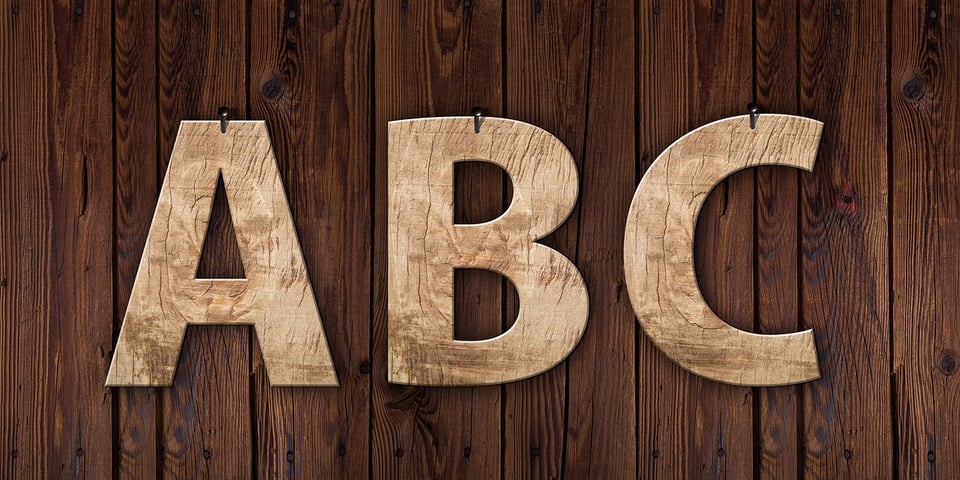The ABCs of Editing Part 3

Last month we touched on the importance of expanding our understanding of Grammar, how Handwriting can benefit our work, the relevance of In Medias Res, what Journaling might look like, why it’s important to be Kind, and why we should always be Learning.
Today, let’s explore Money, Novel Genres, Outlining, Proofreading, (Asking and Answering) Questions, Reading, and Self-Editing.
Granted, I could create at least an entire newsletter (if not an entire series) about each of these topics, but I’ll keep it short to whet your appetite and get you thinking.
Money: What your writing life might look like will probably depend on how much money you would like to earn from your writing. Whether you want to earn a fulltime income, earn extra cash by selling articles or short stories, or simply share your insights and understanding on your social media accounts and/or blog has bearing on how much time and initial capital you’ll have to devote to your work. No matter what your end goal, it’s important to plan ahead and break the journey down into achievable steps . . . and get moving.
Novel Genres: Of course, more and more sub-genres pop up all the time, but according to John Truby, author of The Anatomy of Genres: How Story Forms Explain the Way the World Works, there are 14 major genres. These are as follows: love, horror, action, myth, memoir, coming-of-age, science fiction, crime, comedy, western, gangster, fantasy, thriller, and detective. Although you may not see all of these genre categories in your local bookstore, it’s pretty much guaranteed that your story falls in one or more of these story forms. And certain conventions apply to each one.
Outlining: The plotter v. pantser debate is more accurately reflected on a sliding scale. There are writers whose outline has the word count of a completed book and pantsers who have specific elements of their story in mind but nail down the details as they write. There are several books available about how to write an outline for your book, but there is no one right way to do so. And although you may not understand how an author can sit down and let the story unfold without a clear understanding of the map to get them to The End, there are successful authors who do it every day. You’ll likely have to determine what works best for you by trial and error. The important thing is to make a choice and get the words on the page. Whether you’re a hardcore plotter or a go-with-the-flow pantser, you will likely have to do extensive revisions of your first draft.
Proofreading: As I’ve often mentioned, programs such as ProWriting Aid and Grammarly can help you catch spelling, punctuation, and grammar mistakes, as can eagle-eye beta readers and professional proofreaders. In order to catch some of these mistakes yourself, it’s good to set your work aside for at least a few days and come back to it with fresh eyes. You might be surprised at what jumps off the page when you do so.
(Asking and Answering) Questions: Whether you want to make a fulltime living from your writing or simply share your perspective with a small group of readers is just one of the questions you need to answer. You have to determine when you’re going to write, how much of a priority your writing will have, where you’re going to publish, etc., etc., etc. Not only do you have to ask yourself a plethora of questions, it’s a great idea to ask your readers and potential readers questions as well. Some answers you can research without asking your readers directly, questions such as “What recurring themes do I find in online readers’ groups?” Others are best asked directly, questions such as “What elements of my writing do you enjoy the most?” Keep curious. Keep asking questions. Keep making the needed adjustments while keeping your end goal in sight.
Reading: There are a plethora of benefits to reading both nonfiction and fiction, no matter what you write. Skills development. An understanding of current reader expectations. Relaxation. And so many more. It took me a year and a half after college to pick up a book for enjoyment, but I’m glad I got back to reading. These days we can consume books in so many formats: physical copies, ebooks, audiobooks. Choose your favorite and dive in. Personally, I prefer reading physical copies of nonfiction books so I can easily go back to relevant information again and again. While I read fiction in all three formats, my current favorite is audio. When we set aside time to read, it affects our writing in many ways, both directly and indirectly.
Self-Editing: When we present our beta readers, editor, agent, publisher, readers . . . with the cleanest copy we can produce, we will have removed the initial stumbling blocks that can hinder them from grasping what we’re trying to convey, whether a novel that compels them to read “just one more chapter” or a nonfiction piece that equips them with the answers they’re looking for. I’m not talking about perfection. We all know errors slips through, but we don’t want people stumbling over things we could have fixed with a little more care. A note to all the perfectionists on my list: there comes a point we have to release our work into the world. It won’t be perfect, but that has to be okay.
Next month, we’ll finish the series by discussing Tropes, the Unreliable Narrator, the (Author’s) Voice, the importance of choosing the right Words, Experimental Novels, YA Fiction, and Zeal.
Thanks for reading all the way to the end!
I appreciate each of you more than you know.
Add a comment: